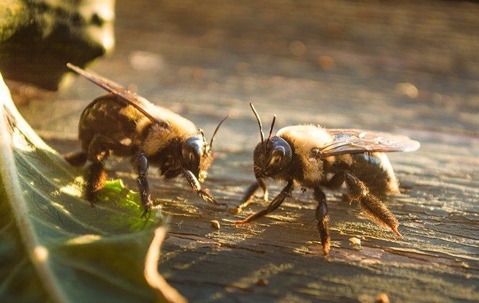How do bees make honeycombs? Honey bees work busily to create hexagonal honeycomb for storing the supplies needed for surviving the colder months. Bees begin construction at the top and work downward. Bees produce beeswax using glands that exist beneath their abdomen. Meanwhile, worker bees collect nectar from plants used for producing honeycomb wax, which they store along with pollen.
How much honey does a bee make in its lifetime? A single bee can produce as much as one tablespoon of honey in its lifetime. Why do honey bees swarm? As with many creatures, honey bees swarm as part of their reproductive process, which results in forming new colonies.
Why Do Honey Bees Nest In Walls And On Structures?
Honeybees seek nesting sites that offer some protection from the elements and potential predators. In some regions, nature sites for accommodating nests are in short supply; therefore, they may use voids and crevices on homes and buildings to form nests.
What Not To Do When You Spot A Beehive
Some of the activities that you should refrain from doing after noticing a beehive include:
- Never intentionally provoke a bee’s nest.
- Maintain some distance to reduce the likelihood of being perceived as a threat to the nest.
- Avoid knowingly exposing children or pets to bee nests.
- Don’t attempt to eradicate nests using a water hose.
Property owners who recognize the existence of a bee colony on their property should remain aware of the risks involved and are encouraged to contact pest control professionals for assistance.
Safe And Gentle Beehive Removal In McAllen
The experts with BUGWORKS Termite & Pest Control Company have many years of experience removing hives. A qualified technician will visit the property to confirm the types of stinging insects involved and the exact location of the nest. Our team has the proper equipment to remove nests from upper floors, roofs, and other elevated locations.
Contact our office today to schedule an inspection.

